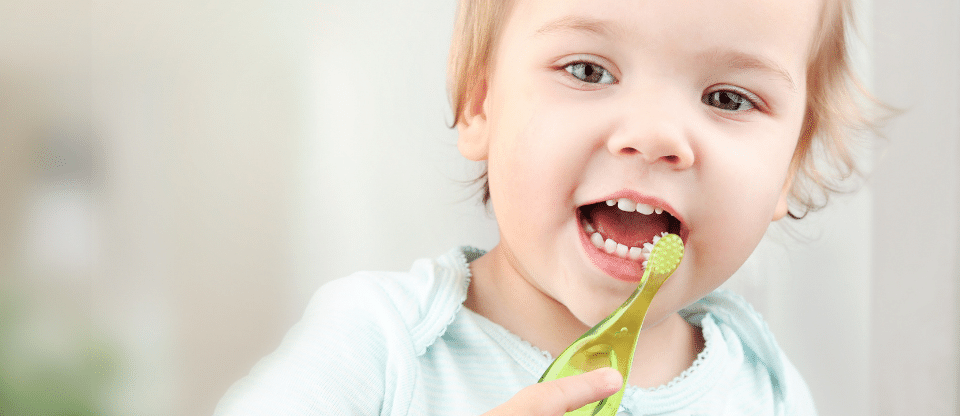Oral Hygiene For Kids
Your child’s well-being is your primary concern, and oral hygiene is an integral aspect of their overall health. It is important to set your child on the right course for a lifetime of good oral hygiene by taking care of their teeth and gums. Read our blog for more information on children’s oral hygiene.
Oral Hygiene for Babies
Your baby will get their first tooth between the ages of six and eight months. Therefore, it is important to begin caring for your baby’s teeth right away. Here are some of our top tips on how to look after your baby’s teeth and gums:
- After feeding, wipe your baby's gums with a warm washcloth. This aids in the removal of bacteria that can lead to tooth decay.
- Wash teeth twice a day with a fluoride toothpaste in a smear the size of a grain of rice, using a soft-bristle toothbrush, until they start to erupt.
- To stop baby bottle tooth decay, put the bottle away after your child has finished drinking. Because when babies drink milk, formula, or juice from bottles for long periods of time or fall asleep with the bottle, they may develop tooth decay.
- Make an appointment for your child's first dental visit before their first birthday or when their first baby tooth appears, whichever comes first. This appointment is similar to a well-baby checkup with your paediatrician.
Oral Hygiene for Children
Children's oral hygiene habits can develop in tandem with their maturation.
By the age of three, children have lost all of their baby teeth. They are referred to as primary teeth. Around the age of six, baby teeth begin to fall out, and the permanent, or adult, teeth begin to emerge. It's common for baby teeth to have gaps between them. They clear the way for the permanent teeth to come in. By the age of 13, the majority of permanent teeth have emerged.
Tooth Eruption Charts

Establishing the Best Oral Hygiene Routine for Children
Here are some tips to help keep your child’s teeth healthy and strong starting at age three:
- Be sure your child brushes for at least 2 minutes twice a day
- Use a pea-sized amount of fluoride toothpaste.
- Start flossing as soon as teeth touch, or even earlier to help build good habits.
- Help your child brush and floss, and remind him or her to pay attention to the back teeth.
- Visit the dentist every 6 months.
From Baby Teeth To Adult Teeth
Baby teeth typically appear between the ages of four and seven months. The two bottom front teeth are typically the first to appear. By the age of three, most children have all 20 baby teeth.
Baby teeth will fall out as early as six years old and as late as 12 years old. When baby teeth fall out and adult teeth break through, your child may have a mixture of teeth. About this time, your dentist can discuss potential dental issues with you and your child. Orthodontic care, such as braces, is needed for certain children.
A complete collection of adult teeth consists of 32 teeth. This includes wisdom teeth, which are typically not present until late adolescence or early adulthood.
Things To Consider
Babies love to suck on their thumbs, toes or their dummy. By the age of four, the majority of children have broken this habit on their own. However, teeth alignment issues may occur as a result of repeated usage. If your child is always sucking after the age of four, talk to your dentist. They will keep an eye out for problems as your child's teeth grow.
When To See A Dentist
Visiting the dentist from a young age will help your child be more comfortable. It also establishes the good habit of regular dental checkups. Everyone should see the dentist twice a year.
Related Blogs:


